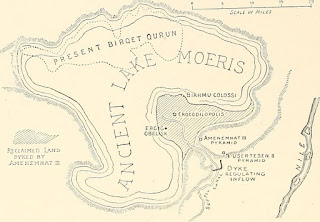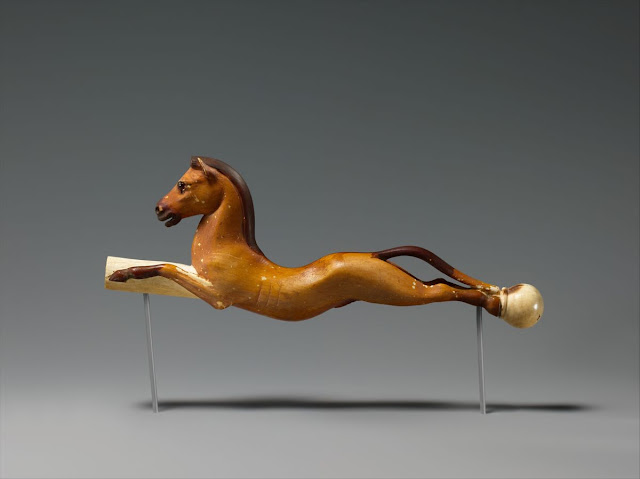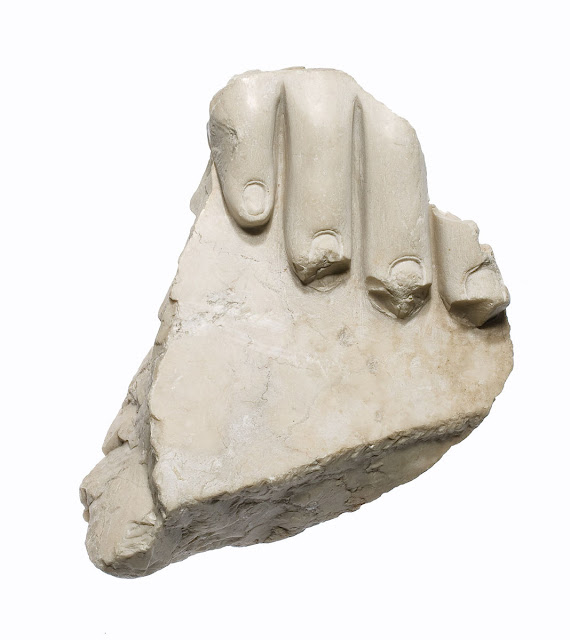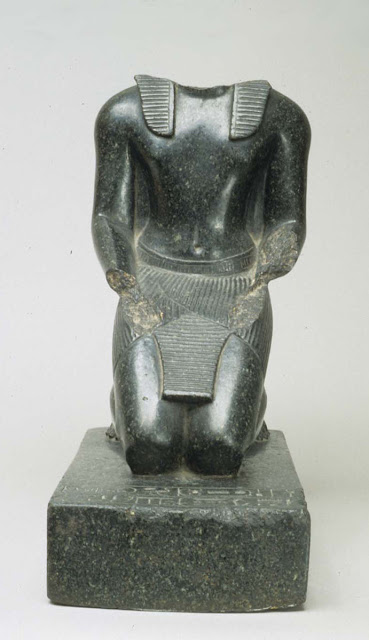The Middle Bronze Age in Nubia was roughly coeval with the Middle Kingdom and the Second Intermediate Period in Egypt (c.2061-1569 BCE). The various cultural affiliations, the developmental phases, and the sub-phases of the Nubian peoples that lived in this era have only been broadly defined; they are still undergoing the process of redefinition. Of particular interest, however, is a population belonging to the Lower Nubian tradition—but also found in the deserts bordering the Nile River and in other parts of Egypt—that was designated by early archaeologists as the Pan-Grave culture. The name was derived from their shallow round or oval graves (0.5-2 meters in depth [1.5-6 feet]), which resembled European baking or cooking pans.
The Pan-Grave burials can be associated with the Med-jay, the fierce Nubian bowmen mentioned in ancient Egyptian texts; the term is also found in the toponym Mgy, and both may derive from the Egyptian term for "the one who moves about," testifying to their nomadism. The Medjay were attested to have been employed as mercenaries, as an expeditionary force in Egypt, at least as early as the Old Kingdom. They have also been associated with a group of mercenaries resident at Gebelein during the First Intermediate Period. The fortresses built in the Second Cataract region seem, at least in part, to have been needed to protect the area from incursions by this group. The Fort at Serra was named "repelling the Medjay," and the Semna dispatches recorded efforts to keep these peoples within their desert boundaries.
The confines of the Pan-Grave peoples in the desert margins has been borne out archaeologically. Cemeteries of this population were often found to be on the perimeter of Nubian C-Group or even Egyptian cemeteries that were positioned closer to the Nile. Whereas the Pan-Grave ceramic assemblage included incised and black-top pottery, these ceramics differed considerably from Nubian C-Group ceramics made at that time. For example, Pan- Grave black-topped "luxury wares" were very finely finished with bodies having a distinct, level black rim; the incised wares were often of similar exceptional quality. The Pan-Grave burial customs and material culture were similar to those of the Nubian Kerma culture of that time. The oval tumulus graves of the Pan-Grave people resembled those of the Kerma culture, as did their practice of decorating the graves with the painted skulls of horned cattle, sheep, or goats.
Daggers and axes have been frequently included in Pan-Grave burials, attesting to an owner's possible role as a mercenary. Distinctive Pan-Grave costume included sets of armlets or sashes made of rectangular mother-of-pearl plaques that were bored at both ends for stringing. Other elements of costume included beaded leather kilts, leather sandals, bead and shell necklaces, and wire torques.
The range of the Pan-Grave people has been established as north to Middle Egypt and south to the Third Cataract of the Nile. Attestations of their presence as far south as Khartoum, however, may have resulted from some misidentification of ceramic types. As for the Pan-Grave peoples who migrated into Egyptian territory and were employed as military guards and bowmen, Janine Bourriau (1991) has suggested that this group was acculturated into Egypt throughout the course of the Middle Kingdom. For example, a gradual evolution has been noted in some of the Pan- Grave cemeteries in Egypt, in which a segregated area with burials that follow a strictly Lower Nubian tradition give way to tombs found within Egyptian necropoli. This evidence substantiates Egyp-tianization. Bourriau has also suggested that the Pan-Grave mercenary soldiers for the Egyptian army were replaced, during the Second Intermediate Period, by recruits from the Kerma culture. In fact, early excavators had actually confused the Kerma burials in Egyptian cemeteries with those of the true Pan-Grave people who had also been buried there.
Recent Posts:
The Pan-Grave burials can be associated with the Med-jay, the fierce Nubian bowmen mentioned in ancient Egyptian texts; the term is also found in the toponym Mgy, and both may derive from the Egyptian term for "the one who moves about," testifying to their nomadism. The Medjay were attested to have been employed as mercenaries, as an expeditionary force in Egypt, at least as early as the Old Kingdom. They have also been associated with a group of mercenaries resident at Gebelein during the First Intermediate Period. The fortresses built in the Second Cataract region seem, at least in part, to have been needed to protect the area from incursions by this group. The Fort at Serra was named "repelling the Medjay," and the Semna dispatches recorded efforts to keep these peoples within their desert boundaries.
 |
| Pan-Grave People and Culture Drawing of a stela from Gebelein depicting a Nubian bownwn in traditional costume with his Egyptian wife and family. The stela is now in the Museum of Fine Arts, Boston. |
Daggers and axes have been frequently included in Pan-Grave burials, attesting to an owner's possible role as a mercenary. Distinctive Pan-Grave costume included sets of armlets or sashes made of rectangular mother-of-pearl plaques that were bored at both ends for stringing. Other elements of costume included beaded leather kilts, leather sandals, bead and shell necklaces, and wire torques.
The range of the Pan-Grave people has been established as north to Middle Egypt and south to the Third Cataract of the Nile. Attestations of their presence as far south as Khartoum, however, may have resulted from some misidentification of ceramic types. As for the Pan-Grave peoples who migrated into Egyptian territory and were employed as military guards and bowmen, Janine Bourriau (1991) has suggested that this group was acculturated into Egypt throughout the course of the Middle Kingdom. For example, a gradual evolution has been noted in some of the Pan- Grave cemeteries in Egypt, in which a segregated area with burials that follow a strictly Lower Nubian tradition give way to tombs found within Egyptian necropoli. This evidence substantiates Egyp-tianization. Bourriau has also suggested that the Pan-Grave mercenary soldiers for the Egyptian army were replaced, during the Second Intermediate Period, by recruits from the Kerma culture. In fact, early excavators had actually confused the Kerma burials in Egyptian cemeteries with those of the true Pan-Grave people who had also been buried there.
Recent Posts:













































